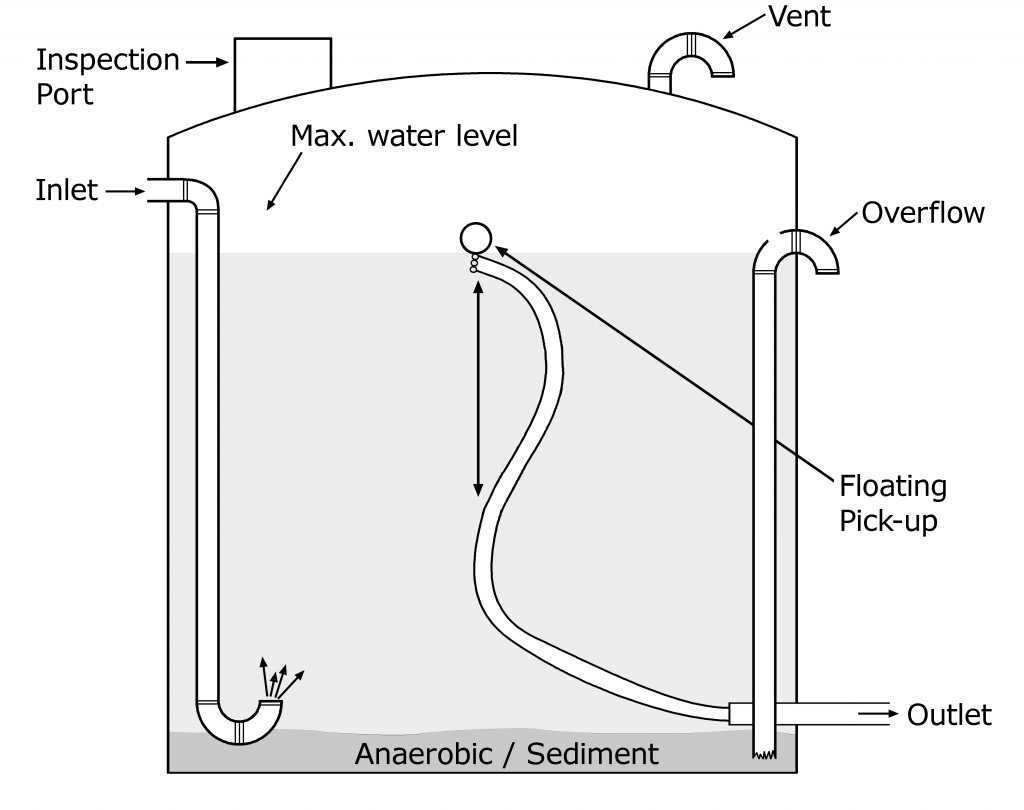The storage container of every RWH system must have an inlet, outlet, overflow, vent, and inspection or service port. If multiple tanks are connected, there can be modifications to these requirements
 Inlet
Inlet
The inlet is where the water goes into the tank from the conveyance system. It can go into the tank through the large opening on the very top of the tank or can be directed in from the side of the tank near the top (as shown in this image). An important characteristic to this component is having a calming inlet (as seen at the bottom of the image). This prevents incoming water from disrupting any potential sediment at the bottom of the tank.
Outlet
The outlet is where the water leaves the storage container to go to the point-of-use. In most RWH systems, the water will be drained from the bottom. This is acceptable as long as it is at least 4 inches from the bottom (to avoid draining sediment). An alternative to the bottom outlet is a floating tank pickup which drains water from the top 4 inches of the water level by using a float ball and mesh screen. These devices are commercially available or can be easily homemade.
Overflow
Regardless of how big your storage container is, you need to plan for overflow. This is any excess water that may occur during heavy rain events. The overflow usually drains directly from the top of the tank. However, as show in this image above, the overflow can be drawn from the bottom (remember there must be a hole in the top of the gooseneck to prevent a siphoning effect). The overflow must be slightly below the level of the inlet.
Vent
Vents are necessary so that a vacuum situation does not occur during a rain event. Vent and overflows need to be equipped with a screen or other device to prevent entry of mosquitoes and small animals.
Inspection Port
The inspection port is the large opening at the top of most storage containers. It allows the user or maintenance provider access to the inside of the tank (remember Safety regarding tanks). In many RWH systems, this inspection port is used as the inlet of the tank, and there are basket screens which fit perfectly into these openings.